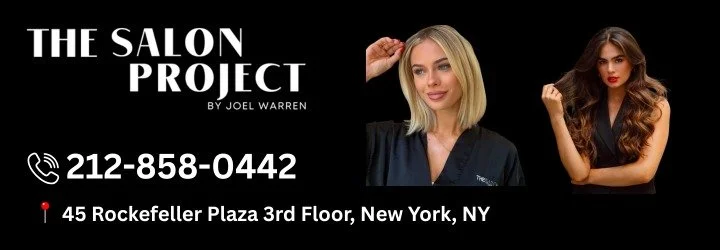Breakage Repair Plan: From Over-Styling to Color Damage
Breakage Repair Plan is essential for anyone struggling with weak, brittle, or damaged hair. Whether your strands have suffered from excessive heat styling, chemical treatments, or environmental stress, having a targeted strategy can make all the difference in restoring strength and shine.
Hair breakage is not just an aesthetic issue; it’s a sign that your hair’s internal structure needs attention. The good news is that with a structured Breakage Repair Plan, you can significantly reduce damage, improve manageability, and even prevent future problems.
Breakage Repair Plan: From Over-Styling to Color Damage
Hair breakage occurs for various reasons, ranging from mechanical stress like brushing and heat styling to chemical damage from coloring or bleaching. Understanding the cause of your breakage is the first step in designing an effective repair plan.
Understanding the Causes of Breakage
Heat Styling: Frequent use of flat irons, curling wands, or blow dryers can weaken hair proteins, making strands more prone to snapping.
Chemical Treatments: Coloring, perming, or relaxing hair alters its structure, leaving it fragile and brittle.
Environmental Factors: Sun exposure, wind, and pollution can strip hair of moisture and essential nutrients.
Improper Hair Care: Using harsh shampoos, skipping conditioners, or rough towel drying can contribute to split ends and breakage.
Identifying which factor is affecting your hair is crucial to implementing the right strategies.
Step 1: Strengthening the Hair Shaft
A core component of any Breakage Repair Plan is strengthening the hair shaft. Protein treatments can help rebuild weakened strands by filling in gaps in the hair’s cortex. Look for treatments containing keratin, hydrolyzed proteins, or amino acids. These ingredients help reinforce the structure of each hair strand, reducing the likelihood of future breakage.
Step 2: Moisture and Hydration
Hydration is equally important. Damaged hair often lacks water and essential oils, leading to brittleness. Incorporate deep conditioning masks at least once a week. Ingredients like shea butter, argan oil, and coconut oil penetrate the hair shaft, restoring elasticity and softness. For ongoing care, leave-in conditioners or hair serums can provide daily moisture protection.
Step 3: Avoiding Further Damage
An effective Breakage Repair Plan also involves preventing additional harm. Minimize heat styling and allow hair to air dry whenever possible. Use a wide-tooth comb to detangle hair gently, and avoid tight hairstyles that pull on the scalp and hairline. When using chemical treatments, ensure a professional application and allow adequate recovery time between processes.
Step 4: Targeted Treatments for Split Ends
Split ends are a common result of prolonged breakage. While trimming is the most effective method to remove damaged tips, specialized serums and oils can temporarily seal the ends and improve appearance. Products containing silicone or natural oils can create a protective layer, preventing the damage from worsening.
Step 5: Nutritional Support
Healthy hair starts from within. Vitamins and minerals such as biotin, zinc, iron, and omega-3 fatty acids support hair strength and growth. A balanced diet rich in lean proteins, fruits, and vegetables ensures your hair receives the nutrients it needs to repair itself naturally. Supplements can be considered, but always consult with a healthcare provider before starting any regimen.
Step 6: Professional Guidance
Sometimes, home care alone is not enough. Consulting a professional stylist or trichologist can provide personalized insights into your hair’s needs. They can recommend treatments tailored to your hair type and level of damage, such as bond-building treatments, salon-grade protein infusions, or customized scalp therapies.
Monitoring Progress
Implementing a Breakage Repair Plan requires patience. Hair typically grows about half an inch per month, so improvements may take several weeks to become noticeable. Regularly assess the health of your hair by checking elasticity, shine, and smoothness. Adjust your plan as needed based on results and ongoing hair needs.
Recommended Products and Tools
To support your breakage repair efforts, consider integrating the following into your routine:
Sulfate-free shampoos: Gentle cleansing without stripping natural oils.
Deep conditioning masks: Weekly intensive treatment for moisture and protein.
Leave-in conditioners: Daily hydration and heat protection.
Heat protectants: Shield hair from high-temperature tools.
Microfiber towels: Reduce friction and minimize breakage during drying.
Lifestyle Considerations
Your daily habits play a crucial role in preventing hair breakage. Avoid sleeping on rough fabrics; opt for silk or satin pillowcases. Limit exposure to harsh sunlight or chlorinated water, and consider protective hairstyles when necessary. Adequate sleep and stress management can also positively affect hair health, as stress hormones may weaken hair follicles over time.
Repair vs. Prevention
While repairing existing damage is important, prevention is equally vital. Incorporate gentle hair care practices, regular trims, and consistent conditioning into your routine. A comprehensive Breakage Repair Plan balances immediate treatment with long-term preventive measures, ensuring hair remains resilient, shiny, and healthy.
Final Thoughts
Hair breakage can feel discouraging, but with a structured and consistent Breakage Repair Plan, it is manageable. Strengthening the hair shaft, maintaining proper hydration, avoiding further damage, and supporting hair from the inside out all contribute to a healthier, more resilient mane. Remember, patience and consistency are key—your hair needs time and care to recover fully.
By combining professional treatments, high-quality hair care products, and mindful daily habits, anyone can transform fragile, damaged strands into smooth, strong, and beautiful hair. This holistic approach ensures that breakage becomes a temporary setback rather than a permanent issue.




